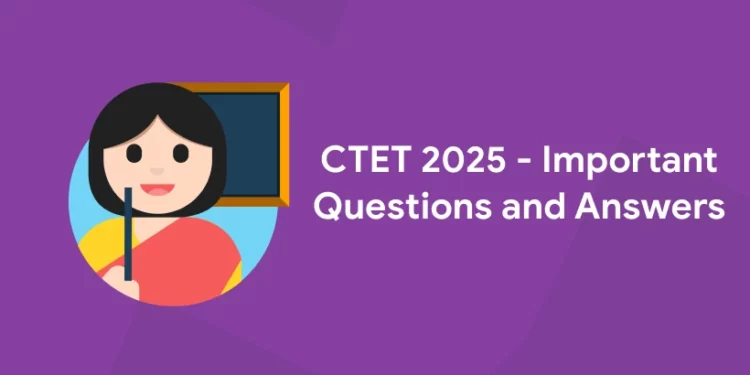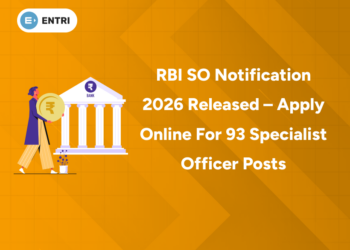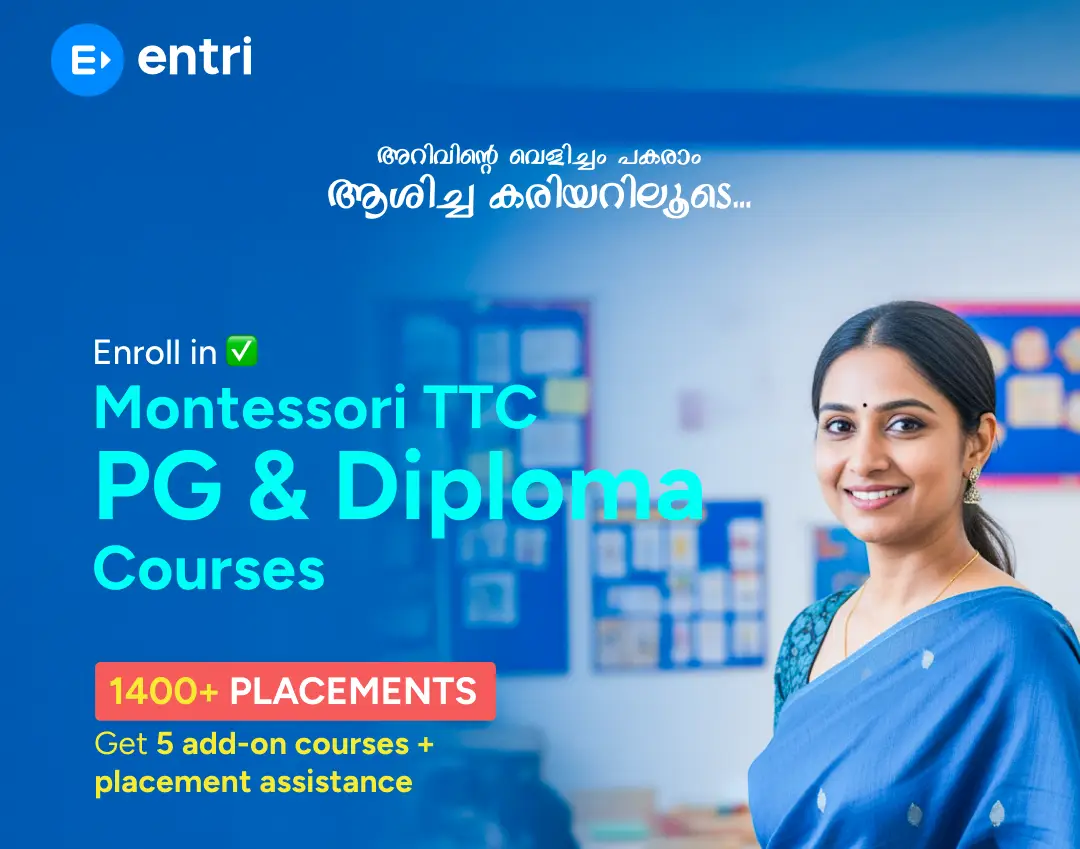Table of Contents
The Central Board of Secondary Education (CBSE) will conduct the 21st edition of the Central Teacher Eligibility Test (CTET) exam in 2025. The CTET exam will be held tentatively in June – July 2025. Eligible candidates will have to register online and submit an online application form for the CTET 2025 exam. Candidates seeking recruitment as primary teachers or elementary teachers in Central Government schools need to appear for the CTET exam to obtain the eligibility certificate. For this, candidates should be familiar with the latest CTET 2025 exam process, syllabus and exam pattern. Candidates can polish their preparation by practicing the CTET important questions and answers given in this article.
The CTET 2025 Exam will be conducted in two phases – Paper I and Paper-II. Both the papers will be conducted on a single day in different shifts. CTET 2020 Paper I (Primary Stage) will be for the candidates who plan to teach for Classes I to V and CTET Paper II (Elementary Stage) will be for the candidates who wish to teach for Classes VI to VIII. Both Paper I and Paper II will have Objective Multiple-Choice Questions.
Download CTET 2025 Admit Card.
CTET Exam Pattern
| Paper | Timing | Duration | Mark |
| Paper-I | 9.30 AM to 12.00 PM | 2.30 hours | 150 |
| Paper-II | 2.00 PM to 04.30 PM | 2.30 hours | 150 |
Paper I (for Classes I to V)
| Subject | Number of Questions (MCQs) | Mark |
| Child Development and Pedagogy (Compulsory) | 30 | 30 |
| Language I (Compulsory) | 30 | 30 |
| Language II (Compulsory) | 30 | 30 |
| Mathematics | 30 | 30 |
| Environmental Studies | 30 | 30 |
| Total | 150 | 150 |
Paper-II (for Classes VI to VIII)
| Subject | Number of Questions (MCQs) | Marks |
| Child Development and Pedagogy (Compulsory) | 30 | 30 |
| Language I (Compulsory) | 30 | 30 |
| Language II (Compulsory) | 30 | 30 |
| Mathematics and Science
(For Mathematics and Science teacher) |
60 | 60 |
| Social Studies/Social Science
(For Social Studies/Social Science teacher) |
60 | 60 |
| Total | 150 | 150 |
Check the complete Syllabus to be covered for both Papers I and II
CTET Important Questions and Answers
1. According to Lev Vygotsky, learning is
(a) an individual activity
(b) a passive activity
(c) conditional activity
(d) a social activity
Ans. (d)
2. One of the critiques of standardized tests has been that
(a) their language is difficult to understand
(b) the tests cannot be administered on large populations
(c) they do not give a clear picture of a child’s ability
(d) they represent largely the mainstream culture and are therefore biased
Ans. (b)
3. Gender is an
(a) psychological entity
(b) social construct
(c) economic concept
(d) biological determinant
Ans. (b)
4. Which of the following is an effective strategy to reduce children’s gender stereotyping and gender-role conformity?
(a) Discussion about gender bias
(b) Emphasizing gender-specific roles
(c) Gender-segregated playgroups
(d) Gender-segregated seating arrangement
Ans. (a)
5. Which one of the following is not related to Continuous and Comprehensive Evaluation?
(a) It is an integral part of the teaching-learning process.
(b) It focuses on a child’s achievement in different learning areas.
(c) It is useful to label children as slow, poor, or intelligent.
(d) It has been mandated by the Right to Education Act of India.
Ans. (c)
6. Use of method’s were learner’s own initiative and efforts are involved is an example of
(a) Deductive method
(b) Learner center method
(c) Traditional method
(d) Interpersonal intelligence
Ans. (b)
7. Children coming from socio-economically disadvantaged backgrounds need a classroom environment which
(a) values and uses their cultural and linguistic knowledge
(b) discourages the use of their language so that they learn the mainstream language
(c) categorizes children based on their abilities
(d) teaches them good behavior
Ans. (c)
8. Riya always thinks of multiple solutions to a problem many of which are original solutions. Riya is displaying characteristics of a/an
(a) creative thinker.
(b) convergent thinker.
(c) rigid thinker.
(d) egocentric thinker.
Ans. (a)
Thinking and Learning of Children- Study Notes.
9. Which one of the following does not describe the ways in which a teacher can model problem solving for children in the classroom?
(a) Be honest about making mistakes while solving something
(b) Use vocabulary like think, ideas, trial, and different answers
(c) Ask questions with convergent answers
(d) Discuss your thought processes about solving a particular problem
Ans. (c)
10. Which of the following is not related to the early number concept?
(a) class inclusion
(b) conservation
(c) measurement
(d) classification
Ans. (b)
Practice the latest mock tests to ace your preparations
11. Which technique is used in the rating scale?
(a) Observation
(b) Checklist
(c) Assignment
(d) Written equation
Ans. (b)
12. Which one of the following best describes a teacher’s role?
(a) A teacher should adhere to the prescribed textbook
(b) Completing the syllabus on time leaving enough time for revision is important
(c) Creating a relaxed space where children learn through dialogue and inquiry
(d) Teacher’s most important role in the classroom is to maintain discipline
Ans. (c)
13. Which one of the following questions invites children to think critically?
(a) What is the right answer?
(b) Can you think of a similar situation?
(c) What are the different ways in which we can solve this?
(d) Do you know the answer to this?
Answer: (c)
14. Etymology is:
(a) science of Pedagogy.
(b) science of study of language.
(c) science of meaning of words.
(d) science of knowing the origin of words.
Ans. (d)
15. The environmental factors that shape development include all of the following except
(a) quality of education
(b) quality of nutrition
(c) culture
(d) physique
Ans. (d)
16. Which of the following is not true of the nature of science?
A. science is always tentative
B. science promotes skepticism
C. science is a process of constructing knowledge
D. science is static in nature
1. B
2. C
3. A
4. D
Ans. (2)
17. Which of the strategies will promote meaning-making in children?
(a) transmission of information
(b) using punitive measures
(c) uniform and standardized testing
(d) exploration and discussion
Ans. (d)
18. Giving cues to children and offering support as and when needed is an example of
(a) reinforcement.
(b) conditioning.
(c) modeling.
(d) scaffolding.
Ans: d
19. Cooperative learning and peer tutoring _____ in an inclusive classroom.
(a) actively discouraged
(b) occasionally used
(c) should not be used
(d) should be actively promoted
Ans. (d)
20. According to Plaget, specific psychological structures are called
(a) schemes
(b) images
(c) mental map
(d) mental tool
Ans. (a)
Practice more CTET important questions and answers for the upcoming CTET 2025. Download and subscribe to Entri App. Entri wishes all the very best for the CTET Exam 2025.












